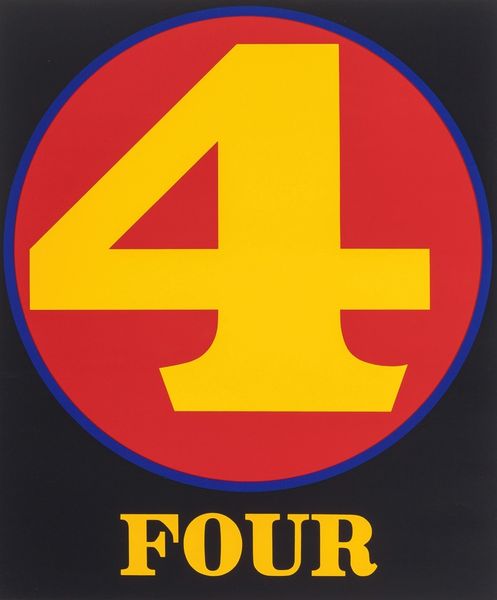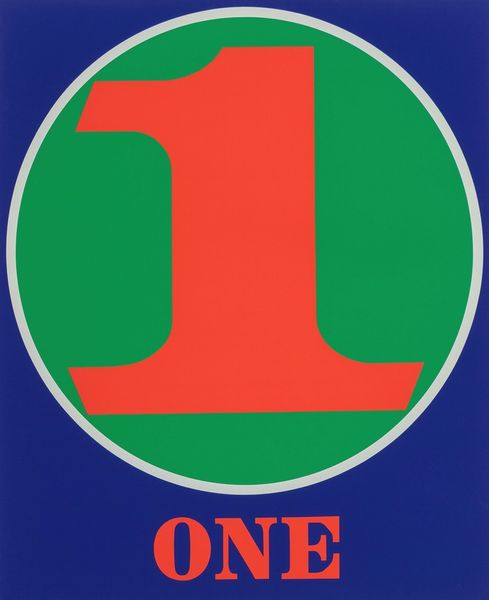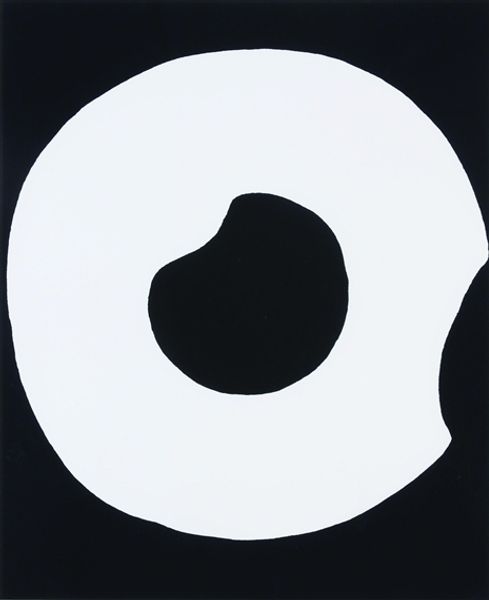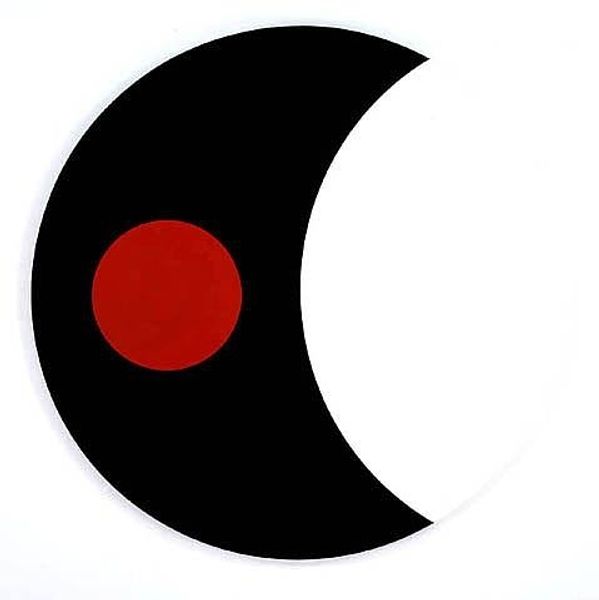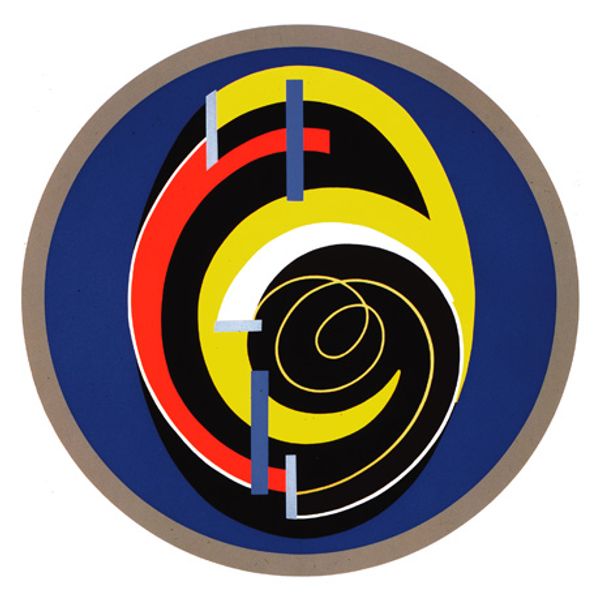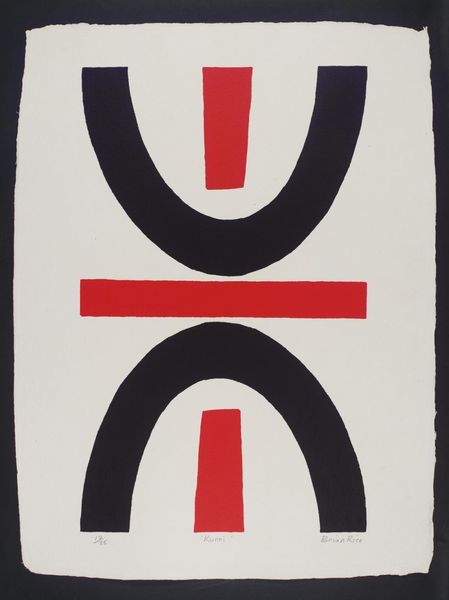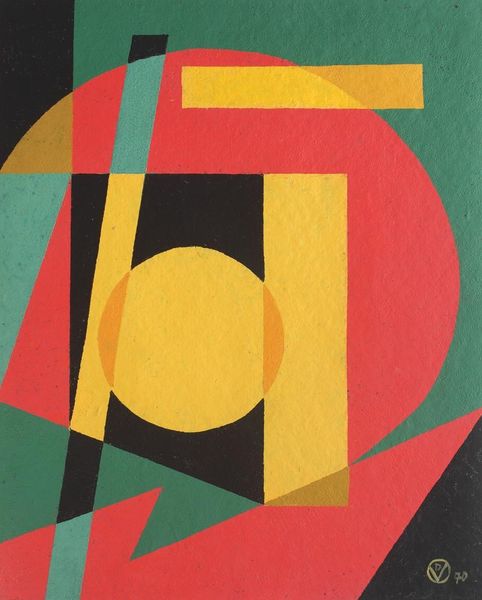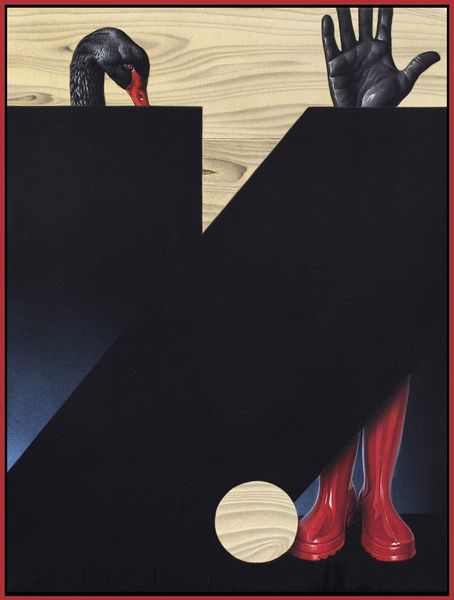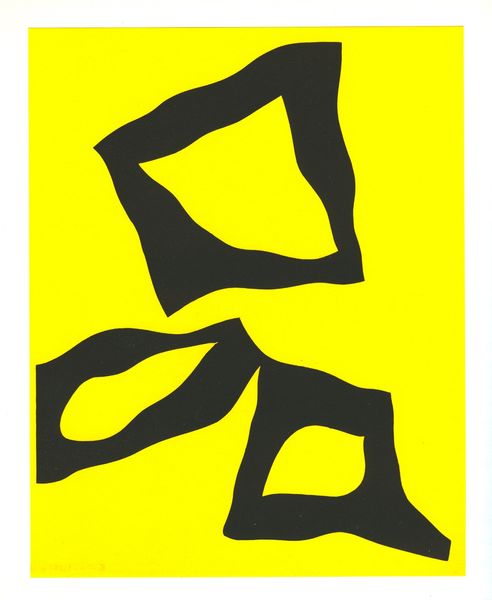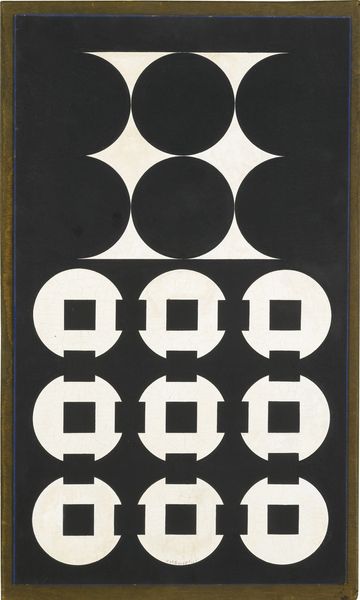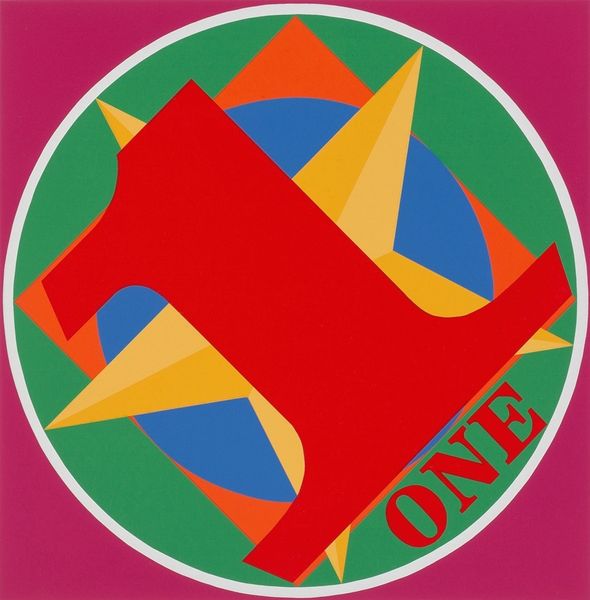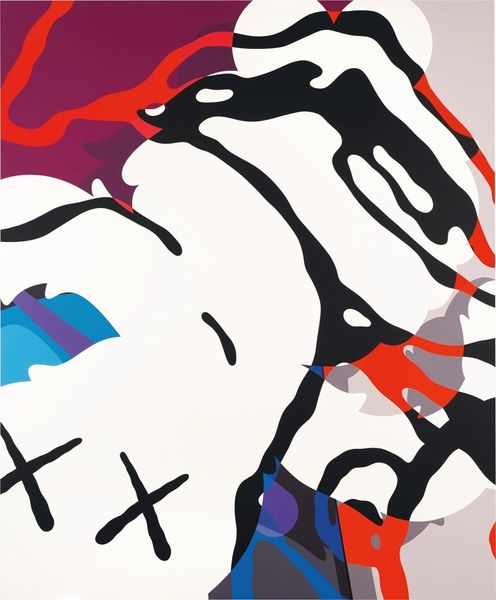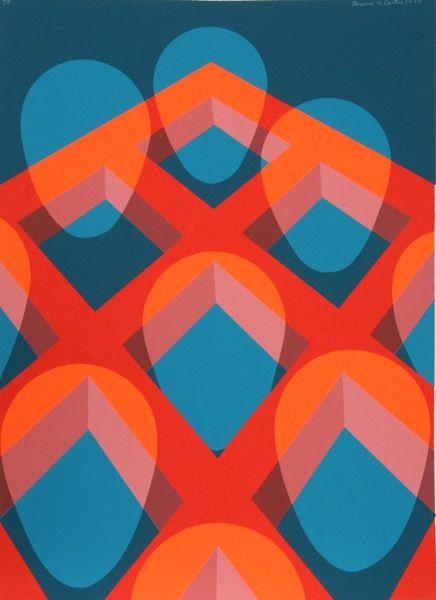
acrylic-paint
#
op art
#
pop art
#
acrylic-paint
#
geometric
#
abstraction
#
pop-art
#
modernism
Copyright: Modern Artists: Artvee
Editor: Robert Indiana’s "Eight," from his Numbers series in 1968, immediately grabs you with its boldness. The acrylic on canvas… there’s something about the industrial feel and the clean lines. What is your take on this work? Curator: The silk-screening process is key. It’s all about mass production, echoing the rising consumerism of the era. We can see the materials not as just paint and canvas, but as commodities embedded in a capitalist system. The repetition, the bold font—it's less about individual expression and more about the mechanics of visual communication. Think about it, why a number? What do numbers represent in a culture obsessed with measurement, counting, profit? Editor: That's a really interesting point. I hadn't considered the commodification aspect so explicitly, focusing more on its visual impact. Does the artist's choice of materials inform how we interpret it? Curator: Absolutely. The choice of acrylic over oil, the sharp lines achievable through screen printing versus the blending possible with traditional painting techniques… these aren’t neutral decisions. They reflect a deliberate move towards a sleek, reproducible aesthetic that aligns with industrial processes. Think of it in contrast to something like an Abstract Expressionist work from the same era: raw emotion versus calculated production. It is almost a factory-like print that is designed to be mass-produced and purchased at-will. Editor: That contrast really clarifies things for me. It is amazing to reconsider the ways that materials can reflect socioeconomic context and question artistic labor and value! Curator: Exactly. Looking at art through the lens of its material production and dissemination can reveal the powerful currents shaping our culture.
Comments
No comments
Be the first to comment and join the conversation on the ultimate creative platform.

